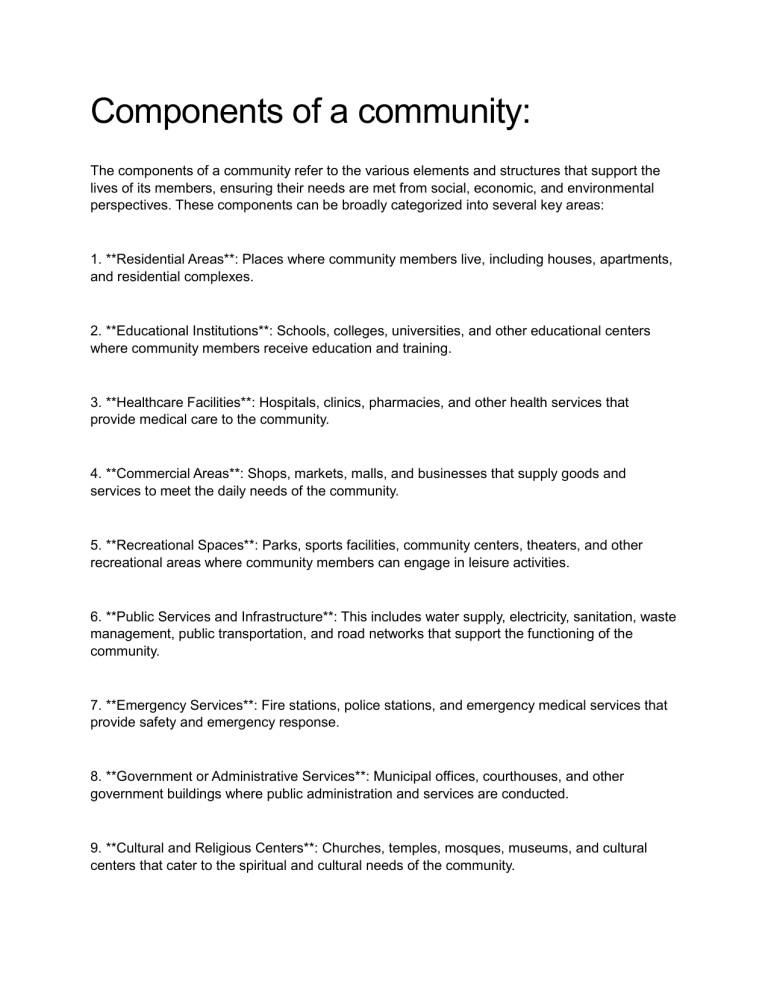
Components of a community: The components of a community refer to the various elements and structures that support the lives of its members, ensuring their needs are met from social, economic, and environmental perspectives. These components can be broadly categorized into several key areas: 1. **Residential Areas**: Places where community members live, including houses, apartments, and residential complexes. 2. **Educational Institutions**: Schools, colleges, universities, and other educational centers where community members receive education and training. 3. **Healthcare Facilities**: Hospitals, clinics, pharmacies, and other health services that provide medical care to the community. 4. **Commercial Areas**: Shops, markets, malls, and businesses that supply goods and services to meet the daily needs of the community. 5. **Recreational Spaces**: Parks, sports facilities, community centers, theaters, and other recreational areas where community members can engage in leisure activities. 6. **Public Services and Infrastructure**: This includes water supply, electricity, sanitation, waste management, public transportation, and road networks that support the functioning of the community. 7. **Emergency Services**: Fire stations, police stations, and emergency medical services that provide safety and emergency response. 8. **Government or Administrative Services**: Municipal offices, courthouses, and other government buildings where public administration and services are conducted. 9. **Cultural and Religious Centers**: Churches, temples, mosques, museums, and cultural centers that cater to the spiritual and cultural needs of the community. 10. **Environmental Components**: Green spaces, rivers, lakes, and other natural elements that contribute to the community's environmental health and offer spaces for relaxation and connection with nature. 11. **Social Structures and Organizations**: Non-profit organizations, clubs, associations, and groups that support community development, social welfare, and civic engagement. These components interact and depend on each other, contributing to the overall well-being, functionality, and identity of the community. Understanding these components helps in appreciating how communities are organized and operate to meet the diverse needs of their members.



